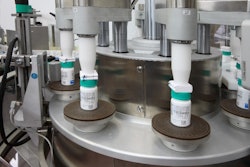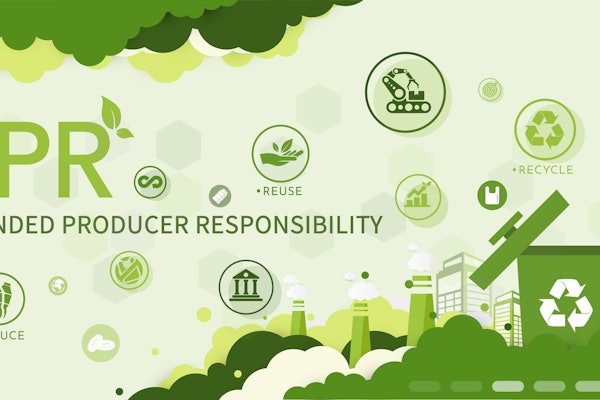Healthcare Packaging (HCP): What are some of the key packaging factors involved in making a switch from prescription medication to over-the-counter OTC for Sanofi/Chattem? Will this trend likely continue in the future?
Nancy Limback: In 2008, Sanofi identified consumer healthcare as a core growth platform and the company subsequently acquired Chattanooga, TN-based Chattem in March 2010. The acquisition provided Sanofi with a presence in the U.S. consumer healthcare market, which represents 25% of the current worldwide market. The appeal of consumer healthcare products is that they are long-lasting assets that are not patent-dependent.
Chattem and Sanofi launched Allegra® over-the-counter [allergy medication] in 2011 and this launch is a great example of a successful Rx-to-OTC switch. It involved 13 new SKUs. User-centered design considerations were used to update the primary and secondary packaging for these products in both bottles and blisters.
When the choice to buy a product or not is up to the consumer, attractive, value-added packaging plays a big role. Packaging characteristics such as convenience and sustainability also are more front and center for OTC products. Many retailers have specific packaging requirements or guidelines to follow when introducing new OTC products and club stores have their own set of packaging needs. These are just a few of the factors that need to be considered when developing packaging for an Rx-to-OTC switch.
HCP: How significant an issue is counterfeiting for Sanofi? What overt/covert methods does the company consider/employ to battle counterfeiters?
Limback: Patient’s access to quality healthcare and drugs is a priority for Sanofi and we are committed to patient safety across the globe. Sanofi has been active for years in anti-counterfeiting efforts and cooperates with local and international public authorities and other healthcare stakeholders to protect patients from this threat.
Sanofi collects and monitors information on counterfeited products via its Central Anti-Counterfeiting Laboratory, and technological prevention via the implementation of innovative solutions to protect and trace its products. The company is also thoroughly committed to the fight against online crime and participates in numerous anti-counterfeiting initiatives on the Internet. Around the world, our experts provide presentations to directors, professors, doctors, pharmacists, and other key persons to raise their awareness of counterfeiting issues. In addition, local Sanofi affiliates launch and participate in awareness campaigns for the general public.
HCP: Overall, trends seem to show rather modest growth for pharmaceuticals in established markets such as North America and Europe, but strong growth potential in places like Asia, Latin America, and BRIC countries. Are these global markets significant for Sanofi? What are the packaging considerations for getting products into these developing markets?
Limback: As a diversified global healthcare leader, Sanofi actively supports growth markets outside of North America and Europe. We conduct business in more than 100 countries. They are a significant part of our long-term growth strategy.
Global packaging harmonization is addressed through the standardization of components and equipment while accommodating the varied graphic requirements in the most efficient way possible. Distribution requirements must be clearly understood as they vary greatly by region across the globe. These differences must be addressed in secondary and/or tertiary packaging in order to make sure that our product arrives at its destination without physical or chemical degradation.
HCP: In Africa, the popularity of cell phones allows patients/consumers to use their phone to verify the authenticity of a package. Some are suggesting that ultimately the phone could be the connection between patient, the package, and their doctor to not only demonstrate compliance/adherence to a drug regimen, but to also get feedback on their particular health status. Is this something Sanofi is researching to take a leadership role in, and again, how would such technology be built into packaging considerations?
Limback: Sanofi monitors the use of increased technology as it relates to compliance packaging. This includes reminders or data transfer/tracking capabilities via phone, email, lights, sounds, etc. Compliance packaging can be an expensive proposition and right now Sanofi has used it on a limited basis associated with clinical study to help support accurate and timely data gathering. We have not yet used it in our commercial applications. However, we believe that to be a successful company of tomorrow, Sanofi will need to go beyond delivering products to delivering real solutions and services. Part of the solution may be addressing unmet patient needs through compliance packaging.
HCP: Give our readers a sense of the different packaging materials, configurations, and equipment used by Sanofi. Are packaging materials and machinery used for Sanofi products as well as private-label and/or contract packaging? With that in mind, what improvements or changes would you like to see from packaging material and machinery suppliers that would benefit your organization?
Limback: Sanofi packages a wide range of products including solid orals, liquids, creams, injectables, devices, and more for human and animal use. The majority of primary packaging is resin-based, including bottles, closures, blisters, and films. Secondary packaging is most often SBS cartons of various sizes and styles. Although I can’t go into detail concerning the specific equipment used, the majority is standard pharmaceutical-type equipment from well-known suppliers. Packaging materials and equipment selection depends on the requirements of each product.
Nancy Limback, manager, package development and innovation at Sanofi US, Chattem Consumer Healthcare Div., has been a packaging professional for more than 25 years. She has worked as a packaging consultant and for a number of large food and pharmaceutical companies such as Ralston Purina, Mars Inc, Mead Johnson/Bristol Myers Squibb, Ralcorp, and Sanofi.























